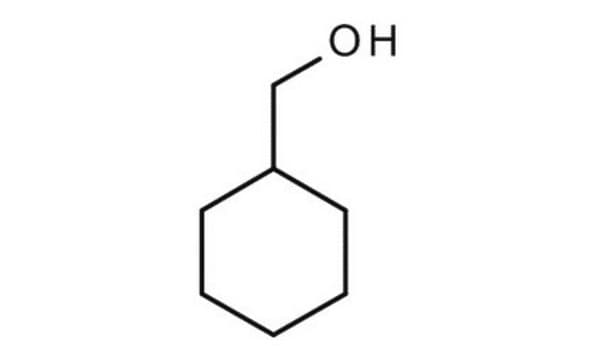D79403
Bicyclohexyl
99%
Synonym(s):
1,1′-Bi(cyclohexyl), BCH, Dicyclohexyl
About This Item
Recommended Products
Assay
99%
form
liquid
autoignition temp.
473 °F
refractive index
n20/D 1.478 (lit.)
bp
227 °C (lit.)
mp
3-4 °C (lit.)
density
0.864 g/mL at 25 °C (lit.)
SMILES string
C1CCC(CC1)C2CCCCC2
InChI
1S/C12H22/c1-3-7-11(8-4-1)12-9-5-2-6-10-12/h11-12H,1-10H2
InChI key
WVIIMZNLDWSIRH-UHFFFAOYSA-N
Gene Information
human ... CYP1A2(1544) , ESR1(2099)
Looking for similar products? Visit Product Comparison Guide
Related Categories
Application
- To synthesize 1-azido-1,1′-bi(cyclohexane) by Mn-catalyzed oxidative azidation method using nucleophilic NaN3 as an azide source.
- To prepare 1-fluoro-1,1′-bicyclohexyl using elemental fluorine.
- In the aliphatic Friedel-Crafts reaction to prepare novel bicyclohexyl based oxygenated building block via C-H activation with aluminum trichloride and acetyl chloride.
Signal Word
Danger
Hazard Statements
Precautionary Statements
Hazard Classifications
Acute Tox. 4 Oral - Aquatic Acute 1 - Aquatic Chronic 2 - Asp. Tox. 1 - STOT SE 3
Target Organs
Respiratory system
Storage Class Code
10 - Combustible liquids
WGK
WGK 3
Flash Point(F)
197.6 °F - closed cup
Flash Point(C)
92 °C - closed cup
Personal Protective Equipment
Certificates of Analysis (COA)
Search for Certificates of Analysis (COA) by entering the products Lot/Batch Number. Lot and Batch Numbers can be found on a product’s label following the words ‘Lot’ or ‘Batch’.
Already Own This Product?
Find documentation for the products that you have recently purchased in the Document Library.
Customers Also Viewed
Our team of scientists has experience in all areas of research including Life Science, Material Science, Chemical Synthesis, Chromatography, Analytical and many others.
Contact Technical Service











